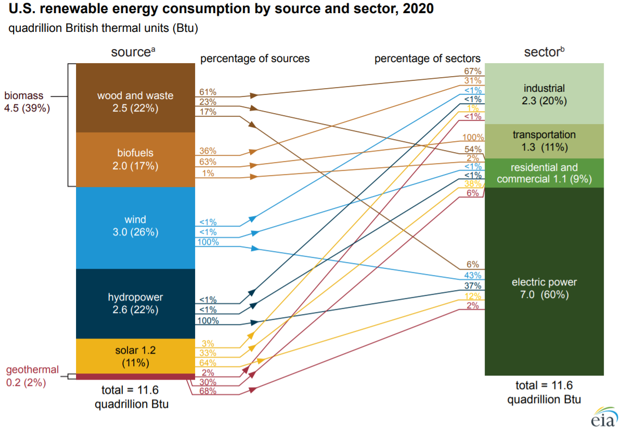In 2020, consumption of renewable energy in the United States grew for the fifth year in a row, reaching a record high of 11.6 quadrillion British thermal units (Btu), or 12% of total U.S. energy consumption. Renewable energy was the only source of U.S. energy consumption that increased in 2020 from 2019; fossil fuel and nuclear consumption declined. Our U.S. renewable energy consumption by source and sector chart (above, larger version here ) shows how much renewable energy by source each sector consumes.
We convert sources of energy to common units of heat, called British thermal units (Btu), to compare different types of energy that are usually measured in units that are not directly comparable, such as gallons of biofuels compared with kilowatthours of wind energy. We use a fossil fuel equivalence to calculate primary energy consumption of noncombustible renewables (wind, hydro, solar, and geothermal), which are not burned to generate electricity and therefore do not have an inherent Btu conversion rate. In this approach , we convert the noncombustible renewables from kilowatthours to Btu using the annual weighted-average Btu conversion rate for all fossil fuels burned to generate electricity in the United States during that year to estimate the amount of […]
Click here to view original web page at www.renewableenergyworld.com
by Mickey Francis, EIA

